Four Storylines for Winter Nationals and NCAA Swimming Invite Weekend
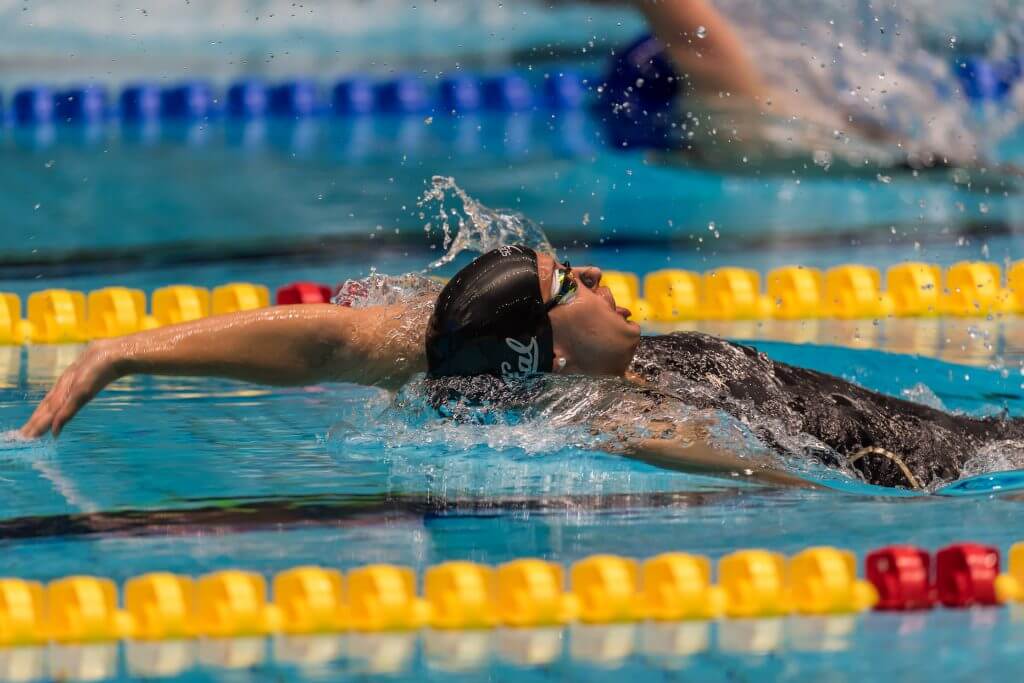
By David Rieder.
As usual, the weekend after Thanksgiving will provide the last significant racing opportunity of the year for college and professional swimmers in the United States. There’s no championship or selection at stake, but Winter Nationals and the second wave of NCAA swimming invitationals are just a good checkpoint.
College invite season began the weekend before Thanksgiving, when Caeleb Dressel issued a reminder that he can do much more than just sprint, becoming the ninth-fastest performer in history in the 200-yard IM, and when Katie Ledecky issued a reminder that she’s still insanely good, clipping her own American record in the 1650 free.
Those two are done with racing for 2017, and plenty of other college teams opted for earlier invitationals as to avoid conflicts with their final exams, but plenty of top college teams are preparing to put on suits for the first time this weekend. Among them…
Texas Invite: Texas, Arizona, USC, Wisconsin, Harvard, BYU, TCU, Oklahoma Baptist, Stanford (men only), Arizona State (men only), UCLA (women only), Northern Arizona (women only)
Georgia Invite: Georgia, Cal, Michigan, Virginia, Auburn (men only), Harvard (diving only), UCLA (women/diving only)
Tennessee Invite: Tennessee, Duke, UNC, Denver, Marshall, Penn, Tennessee, Carson Newman
Oh, and there will be pros, at both Nationals and at the Texas Invite, many of them competing for just the first or second time since the summer. Here’s what to look out for.
1. What should we expect from the Texas men?
It has not been the smoothest start for Eddie Reese and his three-time defending National champions—but even an 0-4 start in dual meet action does not rule out Texas making yet another title run come March.
Even with some of their studs graduated—Clark Smith, Jack Conger and Will Licon—few teams have a trio of swimmers better than Joseph Schooling, Townley Haas and John Shebat. Texas just has not swum like a championship team yet. The struggles have been well-documented.
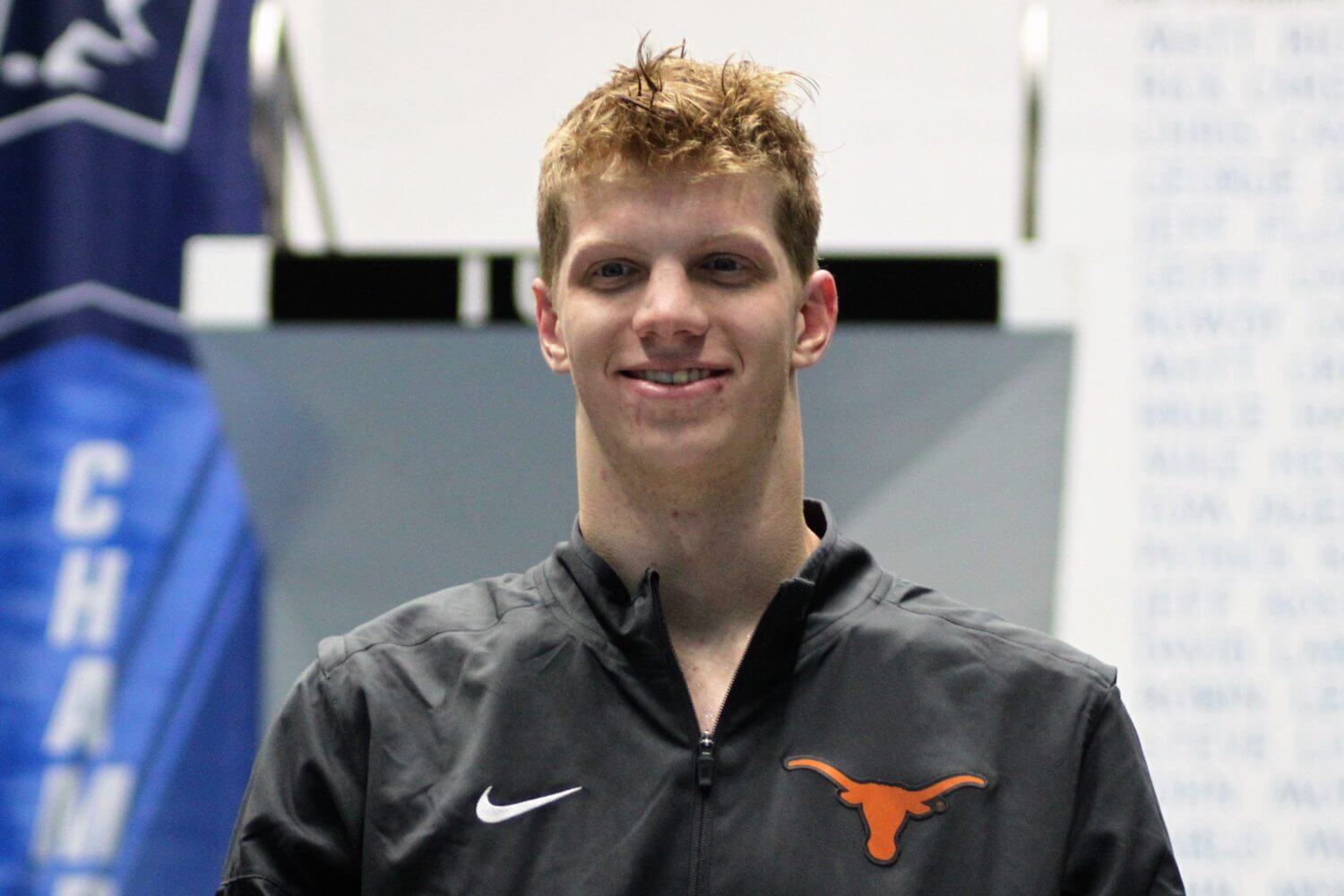
Photo Courtesy: Andy Ringgold / Aringo Photos
The annual Texas Invite is on the slate for this weekend, but it’s still unlikely that Reese will give most of his team, especially his stars, anywhere close to a full taper. But once again, however the Texas men perform in their home pool, their pedigree and, of course, Reese’s, mean that it would be foolish to count out Texas any time this season.
That said, there is one thing we could learn about the Longhorns this weekend: how will Texas handle its breaststroke problem?
After Licon’s graduation, Reese’s top breaststroke options for medley relays have been Schooling, an Olympic gold medalist in the 100 fly, and Ryan Harty, known far better for his backstroke and IM abilities. Will one of them take over the second leg of medley relays full-time, or can Reese unearth a new option? The more meets Texas swims, the more this will become clear.
2. How good are the Golden Bears?
They’re good—that we already know. Both Cal’s women and Cal’s men placed second at last year’s NCAA championships, and there’s little reason to expect much movement this year. But only one of these two teams has national title potential.
The Cal women are about as a deep a team as there is in the country, with Kathleen Baker leading the way and plenty of potential big point-scorers in Abbey Weitzeil, Katie McLaughlin, Amy Bilquist and Noemie Thomas. Farida Osman graduated, but Canadian freshman Sarah Darcel could be a big boost in the IM events.
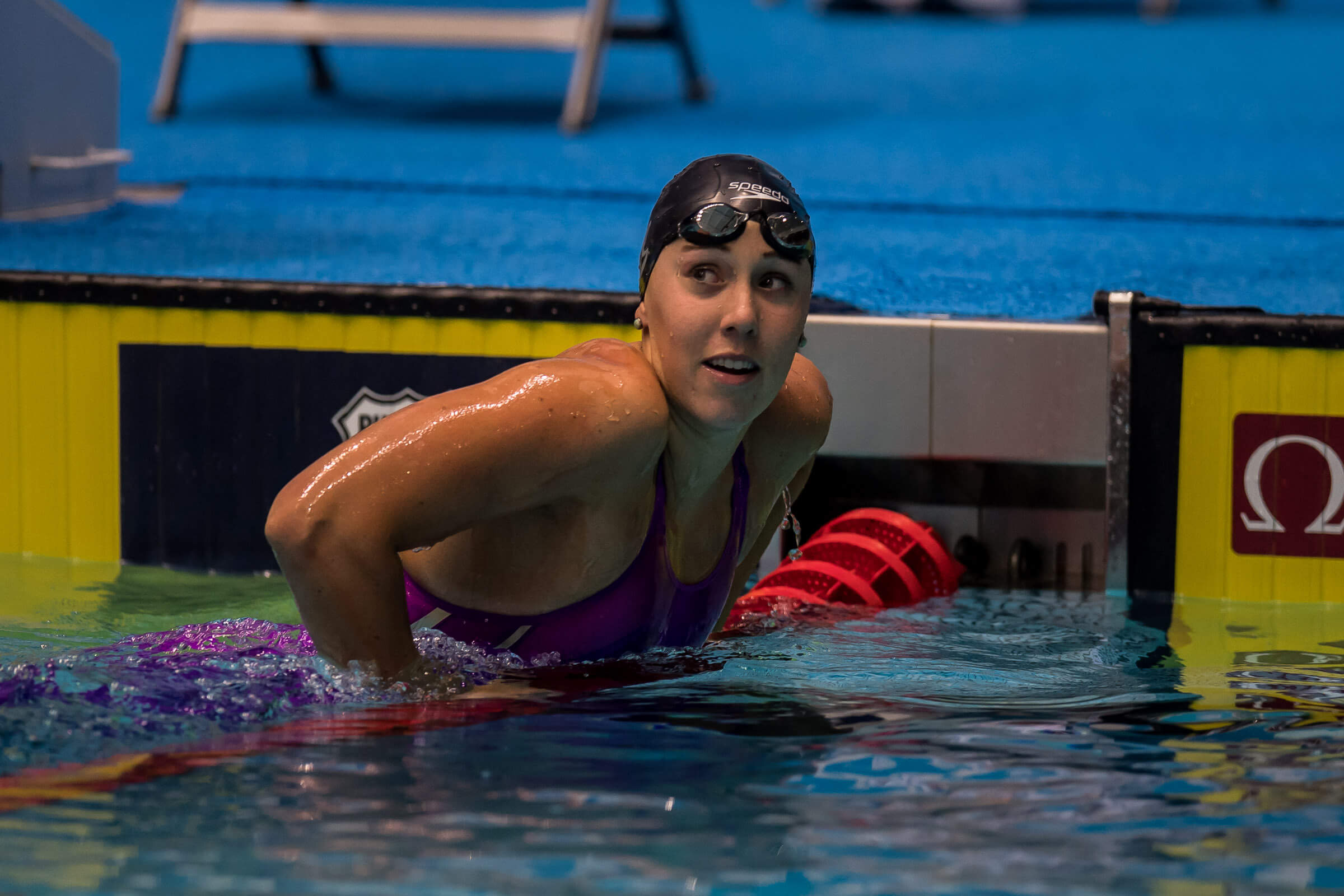
Abbey Weitzeil — Photo Courtesy: Peter H. Bick
Cal has only one problem: Stanford. It’s nearly impossible to see the Bears making up the 120.5 points they lost by last year at the NCAA championships. Stanford is the only team with more depth, the only team with more talent than Cal.
So, yes, the Cal ladies probably can finish no higher than second at the NCAA championships, but they must watch out for the likes of Texas A&M, who beat Stanford in the team race at the Art Adamson Invitational, and also Texas.
But it’s the male Bears that could make a run at a national championship this season. The women’s NCAA title seems like a foregone conclusion—but the men’s doesn’t, not after Texas lost so many heavy-hitters to graduation.
Cal lost their best swimmer, Ryan Murphy, but remains the country’s most balanced team, with senior Justin Lynch swimming his best as a senior and a stacked sprint group with Michael Jensen, Pawel Sendyk, Matt Josa and freshman Ryan Hoffer. They will get big points from breaststroker Connor Hoppe, from flyer Zheng Wen Quah, from IMer Andrew Seliskar. Freshman Sean Grieshop is a wild card.
With both Golden Bear teams scheduled to swim at the Georgia Invite this week, it will become more clear how they stack up with the rest of the country’s best heading into the fall.
3. Pros return to yards
Kelsi Worrell has not swum a short course yards meet since her senior year NCAA championships, which was in March of 2016. At that meet, she crushed her own American record in the 100 fly and also won a national title in the 100 fly.
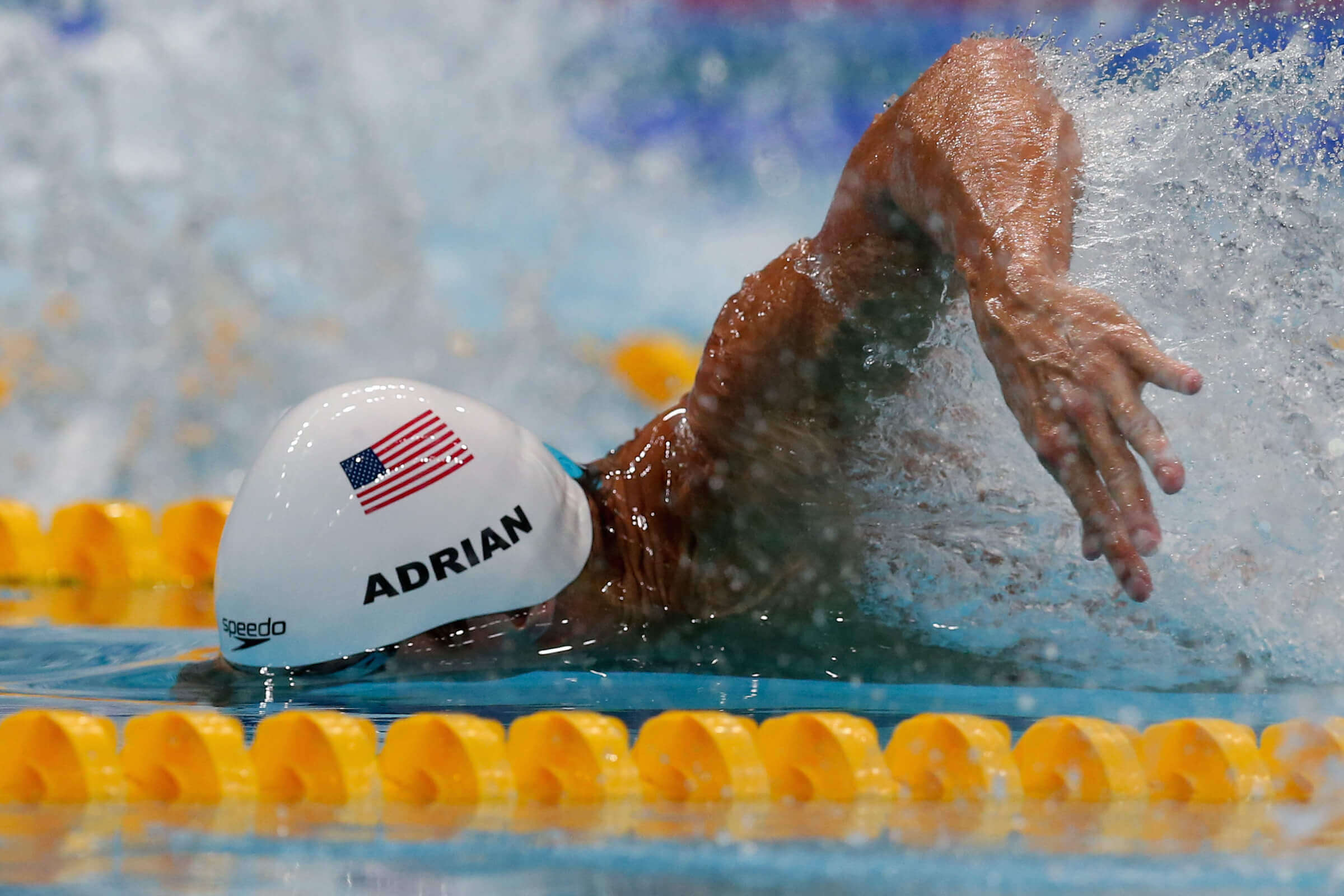
Nathan Adrian — Photo Courtesy: SIPA USA
Nathan Adrian hasn’t competed in yards in a full three years, since Winter Nationals back in December of 2014 in Greensboro, N.C. Back then, he held American records in both the 50 and 100 free—before Dressel showed up and destroyed them.
It’s been a while since the last SCY meet for the likes of Matt Grevers and Cody Miller, too. Why the long layoff? Well, Winter Nationals in 2015 was a long course meet (during the pre-Olympic year), and the majority of Olympians skipped the short course yards season in 2016, either to focus on Short Course Worlds (held one week later, in a 25-meter pool) or to enjoy some time off after the Rio Games.
Once a swimmer turns professional, yards accomplishments don’t mean all that much in the grand scheme of things: The ultimate prize is the Olympics, and even aside from that goal, there’s hardly any money in short course yards swimming.
So if Winter Nationals—or for Grevers and a handful of others, the Texas Invite—is the only chance all year for pros to race yards, fans should enjoy the throwback.
4. Record-watch?
Two weeks ago, some genius predicted that Ledecky would not break any records the following weekend. Well how did that turn out? Wrong.
How about this weekend? Well, probably not, but with some of the names in action, you can’t rule out the possibility.
Chances are, Ryan Murphy won’t have the full rest or shave he would need to go after his records in the men’s backstrokes at Nationals. Same with Worrell in the 100 fly. Baker is in striking distance of both women’s backstroke records, but this early in the season, it’s not likely.
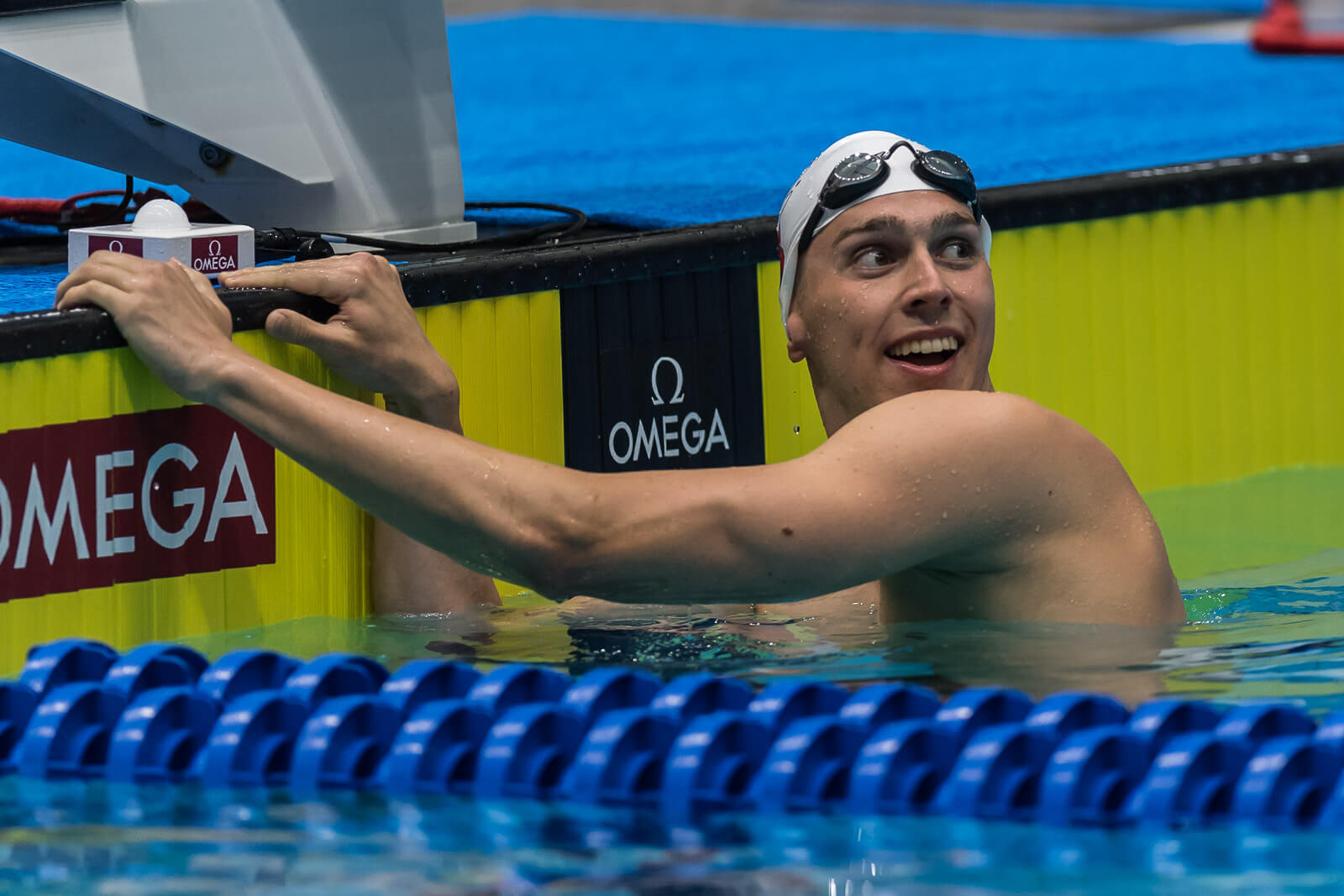
Clark Smith — Photo Courtesy: Peter H. Bick
Several Texas men (post-grads) included have record potential, but as mentioned above, Reese typically picks and chooses who gets a true taper for the December invite. That said, Clark Smith was firing on all cylinders at the Texas Invite two years ago, and he broke the American record in the 1000 free that weekend.
When Smith finished up his college career last March, he explained that he was still unsatisfied with his times and that he wanted to take another shot at the mid-distance free records. Maybe Reese lets him this weekend?
In Texas, Smith will go head-to-head with True Sweetser in the 1650 free, while his toughest competition in the 500 will be a virtual opponent: Whatever time Zane Grothe records when he swims the event at Winter Nationals in Columbus.




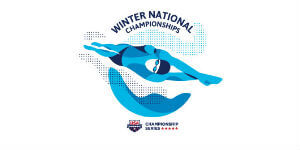
Doubt that Cal women have much to fear from Texas A &M at NCAAs. As typical, Aggies had basically their entire roster of about 40 swimmers and divers at Adamson Invitational, posting up 8 to 10 swimmers in certain events with scoring down to 16 places with not that many teams, which explains outcome there.
Julian Garcia
Jake Harner